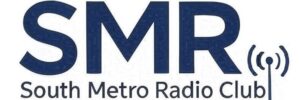Your Ticket to the World: A Guide to Getting Your Amateur Radio License
You feel the pull. Maybe you’ve heard the lively chatter from a local repeater, been fascinated by the concept of bouncing a signal off the moon, or you understand that in an emergency, a ham radio is the most reliable tool for communication when everything else fails. Getting your amateur radio license is the key that unlocks this incredible hobby. It’s easier than you think, and this guide will show you exactly how to join the ranks of radio amateurs.
Why Get Licensed?
An amateur radio license is more than a permit; it’s a gateway to a unique blend of science, skill, and global community.
- Emergency Prepper’s Best Tool: When cell towers and the internet go down, ham radios keep working. Licensed operators provide critical communications during disasters (this is called ARES/RACES).
- Technical Adventure: Build antennas, experiment with digital modes, talk to astronauts on the ISS, or make a contact 10,000 miles away with nothing but a wire and a few watts of power.
- A Global Brotherhood: The community of “hams” is a passionate, generous, and technical group always willing to help a newcomer (an “Elmer” is a mentor in ham slang).
The Three License Classes
The FCC offers three tiers of licenses, each granting more frequencies and privileges. You must start at the first step.
- Technician Class: This is your entry point. The test is straightforward and grants you full privileges on all VHF/UHF bands (local communication through repeaters and simplex), plus limited privileges on the HF shortwave bands (for regional and sometimes international communication). This is the license you should aim for first.
- General Class: The second step. Passing the General exam opens up the vast majority of HF band privileges, allowing you to communicate reliably across the country and around the world.
- Amateur Extra Class: The highest license level. It grants access to all amateur frequencies and is the goal for the most dedicated operators.
The Path to Your First License (Technician): Step-by-Step
Step 1: Study the Material
You need to learn the rules, basic electronics, and radio theory. The Technician exam consists of 35 multiple-choice questions drawn from a public pool. The best ways to study:
- HamStudy.org: A highly recommended, free website and app that uses flashcards and practice tests. It’s incredibly efficient.
- ARRL License Manuals: The classic textbook approach, providing deeper context and learning.
- YouTube Videos: Many excellent channels offer free video courses that walk you through every question pool.
Step 2: Find an Exam Session
Licenses are granted by the FCC, but exams are administered by Volunteer Examiners (VEs). To find a session:
- ARRL Exam Search: Use the ARRL’s Find an Exam Session page.
- Local Clubs: Your local radio club (like ours!) is one of the best sources. Many clubs host regular testing sessions.
- Online Testing: Many teams now offer online exams via video conference. This is a convenient and popular option.
Step 3: Take the Exam
- You must bring a legal photo ID and your Federal Registration Number (FRN). If you don’t have an FRN, you can register for one for free on the FCC website beforehand.
- The exam fee is typically $15.
- You only need to get 26 out of 35 questions correct to pass (74%).
- Bonus: When you take your Technician exam, you can take the General exam for free immediately after, should you feel prepared. If you pass both, you only pay one fee!
Step 4: Get Your Call Sign!
After passing, the VE team will submit your paperwork to the FCC. Within a few days (often just 24-48 hours), your new, unique call sign will appear in the FCC’s database. You are now a licensed amateur radio operator and can legally transmit!
What’s Next? Get On The Air!
- Get a Radio: A good starter VHF/UHF handheld radio (HT) is a perfect way to begin accessing local repeaters.
- Listen First: Program your local repeaters and listen to how conversations (“QSOs”) flow.
- Make Your First Call: Don’t be nervous! Tune to an active repeater and simply say: “[Callsign] monitoring.” Someone will welcome you. Tell them you’re a new ham—they will be thrilled to help.
Getting your license is an achievement that opens a door to a lifelong hobby of exploration and service. The community is waiting to welcome you.
We are here to help! Contact The South Metro Radio Club Name if you have questions or need an Elmer to guide you.
*73 (the ham radio equivalent of “best regards”) and we hope to work you on the air soon
